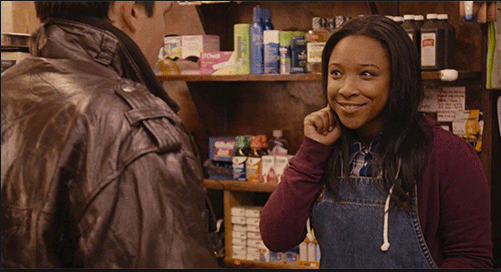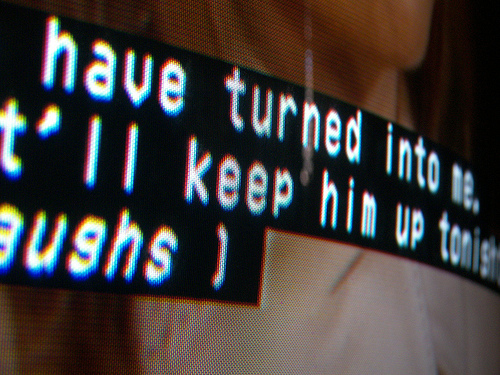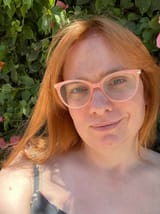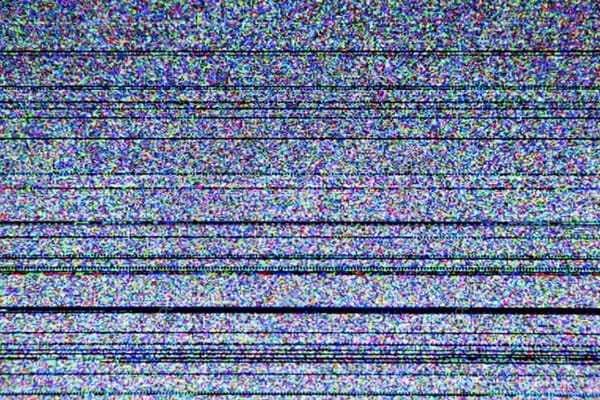Accessible Representation: When just showing Deafness isn't enough
By Noah Angus Johnson

(Welcome to the Wednesday newsletter! Each week, I’m publishing a new pop culture essay from a freelancer. For the month of February, these are going out to all subscribers, but I’m putting them behind the paywall starting in March. If you subscribe, it helps me pay these freelancers for their efforts! This week: Noah Johnson, on why representation of Deaf characters has so far outstripped accessibility to entertainment for Deaf audience members.)
From age five to about 13, I used to sit in a recording booth and repeat words like “hot dog” and “ice cream” and “race car” into the microphone, while a woman nodded encouragingly on the other side of the soundproof glass, her mouth hidden by a sheet of paper.
I was not a child actor recording a spot for the Indy 500. I was—and am—hard of hearing, and these were my biannual audiologist visits. The results were always the same: I couldn’t hear very well. My audiologist would say “hot dog” and I would say it back, and she would gradually lower the volume until our back-and-forth ceased. I would sit there, fidgeting, completely unaware there was sound coming through the headset.
On the one hand, this story could seem incredibly mundane. Going to the doctor is not an uncommon experience! On the other hand, for most of my life I didn’t know anyone else who went to this kind of doctor. There was never anyone to talk to about it. Instead, stories became my refuge, particularly books. The written word didn’t trick me by dancing in and out of a decibel range I could perceive, or hiding in everyday ambient noise so I would be forced to go searching for it. I liked movies, too, but the ideal way for me to experience them was a foot from the TV, the rewind button on the VCR within arm’s reach. Closed captioning standards were a mess at the time, and my parents never made it a priority to figure out how to get a compatible VHS tape, VCR, and TV set to work together. I could, after all, still hear. It would be many years before closed captioning, home audio technology, and personal headphones reached a point of ubiquity that allowed me ease of access to visual storytelling. Once I had that access, I fell in love, particularly with television.
And yet across all these stories, I rarely encountered Deaf and hard of hearing people. That lack of representation, happily, has improved at a steady pace. In the HBO Max miniseries I Hate Suzie, Billie Piper’s character is mother to a Deaf child. SyFy’s The Magicians features Deaf characters in minor roles without undue comment. One of the leads of the ABC Family (now Freeform) series Switched at Birth is Deaf, and the show spends long stretches of screentime showing characters communicating solely through American Sign Language.
In fact, representation has improved so much it has begun to outstrip accessibility. To be sure, accessibility has also improved by leaps and bounds. The digital age has simplified captioning tech to the press of a button, and captioning standards have been slowly embedding themselves across all forms of video media. But these improvements function within a media ecosystem in which hearing people are still the default. The on-screen representation of Deaf people is also reflective of this, to the point where it is in danger of reinforcing marginalization and hampering further progress.

Take, for example, season two, episode six of Netflix’s Master of None, “New York, I Love You.” For nearly its entire runtime, the episode eschews the stories of its main characters and instead shows us a trio of vignettes from the lives of ordinary New Yorkers, all of whom are marginalized in some way and all of whom are not typically the focus of American television stories. One of these characters is Maya, a Deaf woman going through a rough patch with her boyfriend. For this segment, there is no sound, not even a score. It’s meant to give viewers an intimate window into how Maya experiences the world, and it became a huge success, garnering widespread praise. Kayla Kumari Upadhyaya of The A.V. Club writes, “No audio necessary: [Treshelle Edmond’s] mere presence carries the segment, and strong editing and direction choices make the episode a technical sensation.”
The praise here is focused specifically on how the episode manages to depict the Deaf experience in a way that’s intuitively accessible for its hearing audience. There’s no doubt the segment is a marvel, but all that technical effort is in service to an experience abled people can enter and leave with ease and comfort. Every aspect of the segment’s design assumes a hearing audience. The sudden removal of all sound is jarring, yes, but subsequently immersive, depicting a day in the life of someone who experiences the world in a radically different way. It’s A Very Special Episode precisely because we default to a normal that excludes the people it’s about, among which are the Deaf and hard of hearing. As Shoshanna Stern, the Deaf co-creator and showrunner of the Sundance Now series This Close, puts it, “Silence is the invention of sound.”
There’s nothing inherently wrong with Master of None’s approach. It accomplishes what it sets out to do and does so with aplomb. One goal of art, and perhaps one of its greatest strengths, is to engender empathy. I will never speak against bringing marginalized experiences to the forefront, even if they have to be edited in such a way as to be palatable to those whose experiences are utterly different. That’s how it goes with incremental progress. But the natural enemy of incrementalism is complacency. Representation alone can only achieve so much if we fail to question the assumptions of craft.
In his new book, Craft in the Real World, Matthew Salesses writes, “What we call craft is in fact nothing more or less than a set of expectations. […] These expectations are never neutral. They represent the values of the culturally dominant population.” Craft in the Real World is primarily a book about pedagogy. Salesses, a Korean American fiction writer who has taught dozens of fiction workshops, wants us to reconsider the way we teach craft. The rules we teach fiction writers are informed by the expectations of who we assume they’re writing for, and too often, that assumed audience is straight, white, cisgender, and abled. These same expectations also dominate the craft of making a television show. When we assume a given audience is a hearing one, any representation of Deaf people must be subservient to that audience’s attendant expectations.

Accessibility, also, is a question of craft. When we make movies and TV for a hearing audience, we relegate accessibility measures to optional features that reside outside consideration of the work as complete and effective. This first results in the othering many disabled people face when the onus is on them to seek out special accommodations. It also normalizes the absence of measures like captioning and creates a culture of resistance to the presence of such. We use closed captions (optional and hidden by default) instead of open captions (can’t be turned off) because hearing people tend to find captions distracting, but that’s only because conventional filmmaking has created the expectation that they not be there.
I have experienced this kind of resistance plenty of times. Guests in my own home will complain that captions are on by default. Imagine having open captions as standard in a movie theater: people would raise hell. I didn’t even know closed caption and assistive listening devices were an option until I was an adult, and they remain somewhat of a pain to inquire about and set up. (Why can’t I request one ahead of time with my ticket purchase?) Separate showings with open captions remain rare, and in any case compound the problem of othering and limited access.
None of this has to be the norm. Public perception can be changed; as Ernie Smith notes in Atlas Obscura, it has toward letterboxing. That fight was largely won, ironically enough, by directors refusing to compromise the craft of their films. But there’s another player in accelerating mainstream acceptance: mobile devices. “Watching a video on these devices, particularly in full-screen, generally means that there will be some natural letterboxing going on, just simply due to the design of our machines,” Smith writes. Captions, too, have benefited from the shift in audience expectations due to modern tech, particularly social media. Auto-playing videos on a feed are muted by default, and advertisers and content creators have responded by adding captions in an effort to hook viewers.
And it doesn’t have to stop at captions. We can commit to reevaluating the standards of craft that fail to center accessibility in the very act of creation. Theatre has made some interesting strides in this regard. Artist Christine Sun Kim imagines more artfully written captions. The “aesthetics of access,” as Jenny Sealy of the Graeae Theatre Company in the UK calls it, offer limitless possibilities for original work.
An ambitious and daring work like “New York, I Love You” deserves the praise it gets for representing a marginalized community, not just with even-handedness and respect for their basic humanity, but also with a conscious effort to explore the world as Deaf people experience it. Yet representation is inseparable from accessibility, and the culturally imposed limitations of craft ultimately highlight that film and TV still isn’t for Deaf people. We can’t just continue to make art about the Deaf when our presumed audience excludes them.
As a child, I didn’t necessarily pine for someone like me to be there on the screen. But not having to sit a foot from the TV? That might have changed my life.
Episodes is published three times per week. Mondays feature my thoughts on assorted topics. Wednesdays offer pop culture thoughts from freelance writers. Fridays are TV recaps written by myself. The Wednesday and Friday editions are only available to subscribers. Suggest topics for future installments via email or on Twitter. Read more of my work at Vox.




